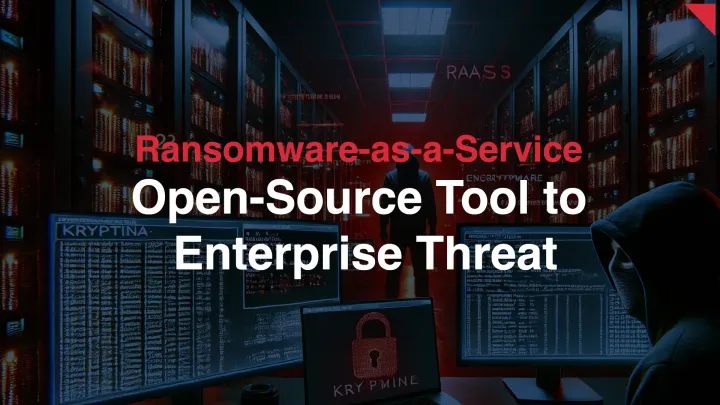Franklin County, Kansas Hit by Ransomware Attack, 29,690 Affected
On September 20, 2024, a consumer notice document surfaced regarding an incident on May 19, 2024, where Franklin County, Kansas, fell victim to a ransomware attack, compromising sensitive data from the County Clerk's Office.

Introduction
On September 20, 2024, a consumer notice document surfaced regarding an incident on May 19, 2024, where Franklin County, Kansas, fell victim to a ransomware attack, compromising sensitive data from the County Clerk's Office. The breach was discovered on August 29, 2024, after county officials launched a thorough investigation. Nearly 30,000 individuals, including eight residents of Maine, had their personal information exposed. Franklin County notified affected individuals on September 20, 2024, offering 12 months of free identity monitoring services through Experian IdentityWorks.
Report Overview
The attack was first detected on May 20, 2024, when Franklin County discovered abnormal activity in its network systems. According to county officials, cybercriminals had infiltrated the network the day before, taking a trove of sensitive information. Upon detection, the county responded immediately by enlisting a nationally recognized digital forensics team to secure the systems and assess the damage. The incident was also reported to federal law enforcement authorities, ensuring the breach was investigated at multiple levels.
After months of investigation, the breach's scope was confirmed on August 16, 2024. The cybercriminals had accessed personal data stored within the county’s poll book records. The county's statement noted that, as of this discovery, no evidence has been found that the data has been sold or exposed on the dark web.
The ransomware attack on Franklin County followed a familiar but dangerous pattern. Cybercriminals gained unauthorized access to the county's network, locking down critical systems and extracting sensitive data before deploying the ransomware. This "double extortion" tactic, where data is stolen before encryption, has become increasingly common in ransomware attacks targeting government entities.
The attack compromised a wide range of personal identifiers tied to the county's poll book records. While the exact method of initial access remains undisclosed, Franklin County’s post-breach actions focused on securing network access points, disabling inactive user accounts, and strengthening firewall protections.
The data breach affected 29,690 individuals, and though the number of impacted Maine residents was relatively low (eight in total), the potential consequences for those affected are significant. Personal data in poll book records can include names, addresses, and other identifying information, putting victims at increased risk of identity theft and fraud.
To mitigate the damage, Franklin County has offered all affected individuals one year of identity monitoring services, including credit monitoring, identity restoration, and up to $1 million in identity theft insurance. Victims are urged to enrol in these services as soon as possible to safeguard their personal information.
Beyond the immediate effects on the individuals involved, this incident serves as another stark reminder of the vulnerability of local government systems to ransomware attacks. Franklin County has since taken measures to bolster its cybersecurity posture, including deploying advanced security monitoring tools and updating firewall protections to prevent future attacks.
Insights and Analysis
While Franklin County works to secure its systems, individuals affected by this breach should take proactive steps to protect themselves. Enrolling in the identity monitoring service provided by Experian is crucial for early detection of fraudulent activity. Additionally, individuals should remain vigilant by regularly reviewing credit reports and financial statements for signs of unauthorized transactions.
The county’s investigation revealed no evidence of the stolen data being circulated or sold on the dark web. However, identity theft can occur months after an initial breach, making it important for affected individuals to stay alert and take advantage of the free identity restoration services available to them.
Conclusion
The Franklin County ransomware attack is a stark example of the increasing threat posed by cybercriminals targeting local governments. While the county has responded swiftly by securing its systems and providing identity protection services, the broader implications of this breach highlight the need for continuous vigilance and improved cybersecurity measures across all sectors. Individuals who have received notification of the breach are encouraged to take immediate action to protect their personal information and monitor for potential fraud.
For more information or assistance, Franklin County has set up a dedicated helpline available Monday to Friday from 8:00 am to 8:00 pm Central Time. Affected individuals can call 833-918-8989, providing engagement number B131827 for faster service.
Cybersecurity experts emphasize the importance of multi-layered security protocols, especially in government systems where sensitive data is at risk. This incident serves as a reminder that robust security measures and constant vigilance are essential to counter the growing threat of ransomware.
Indicators of Compromise (IOCs)
No specific Indicators of Compromise (IOCs) were provided in the source material
MITRE ATT&CK TTPs
No specific MITRE ATT&CK TTPs were provided in the source material.
References






Comments ()